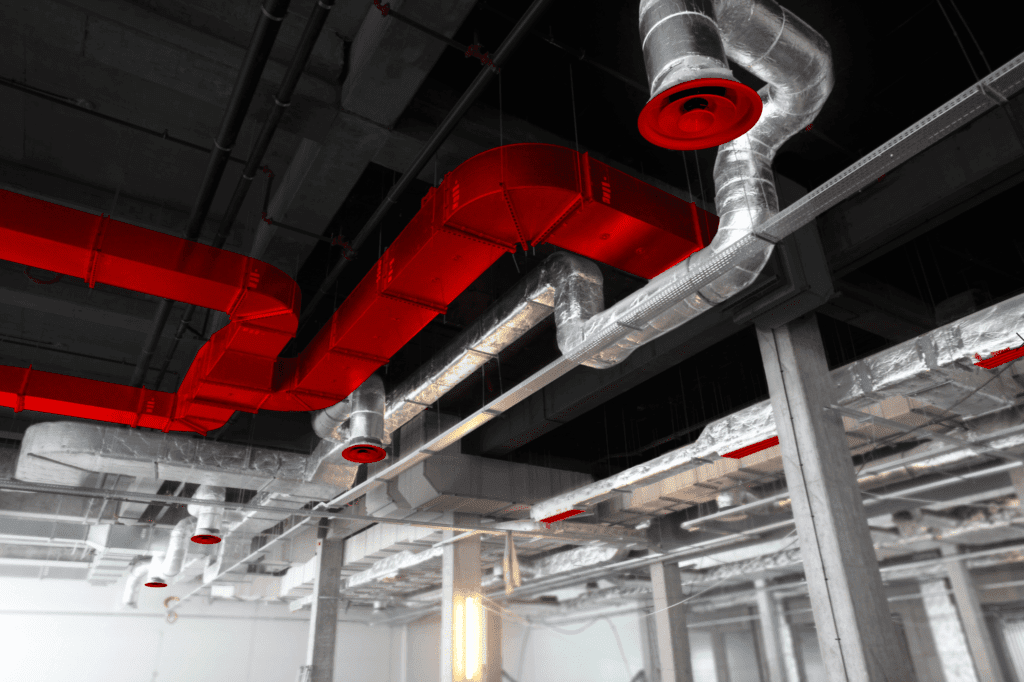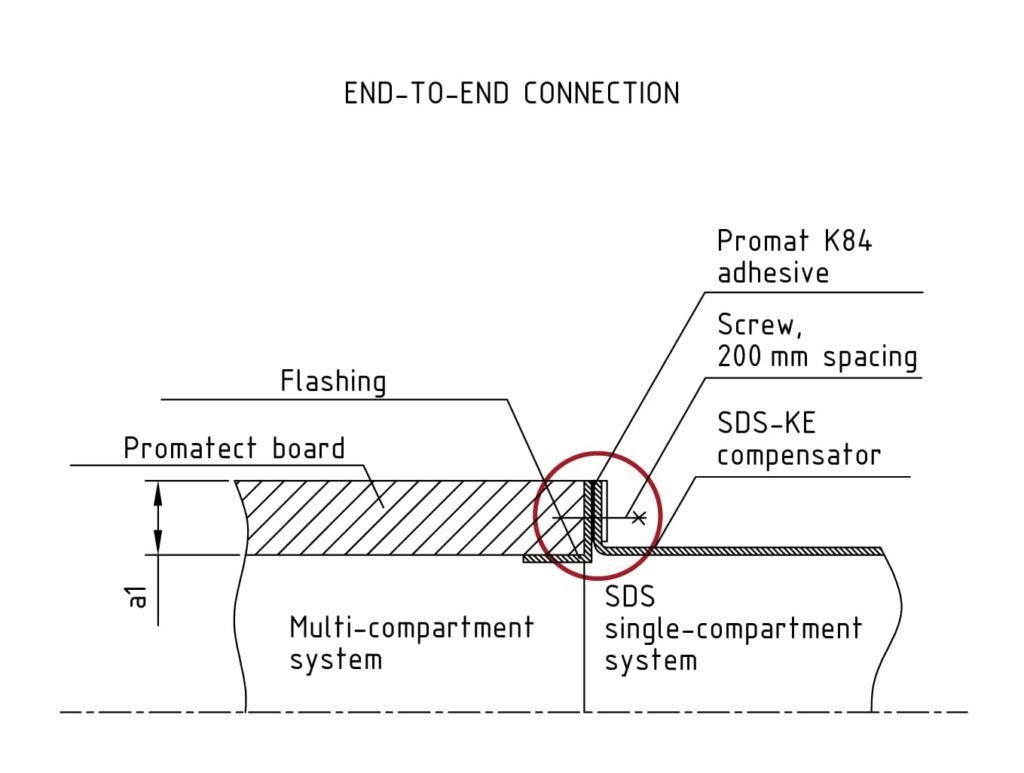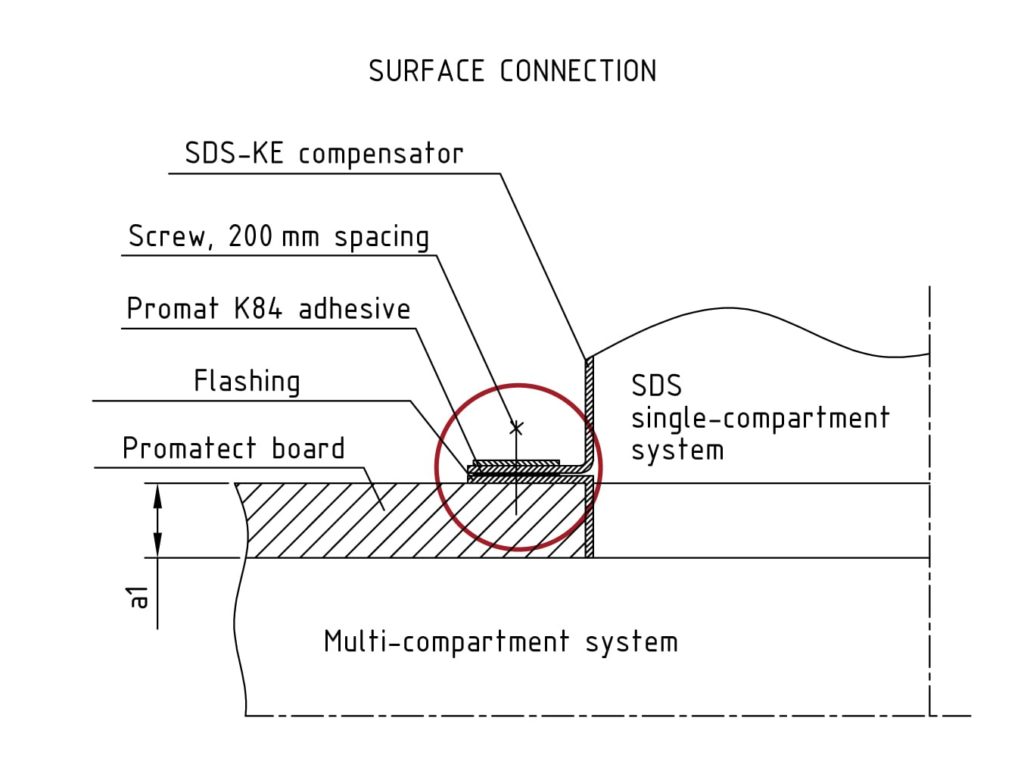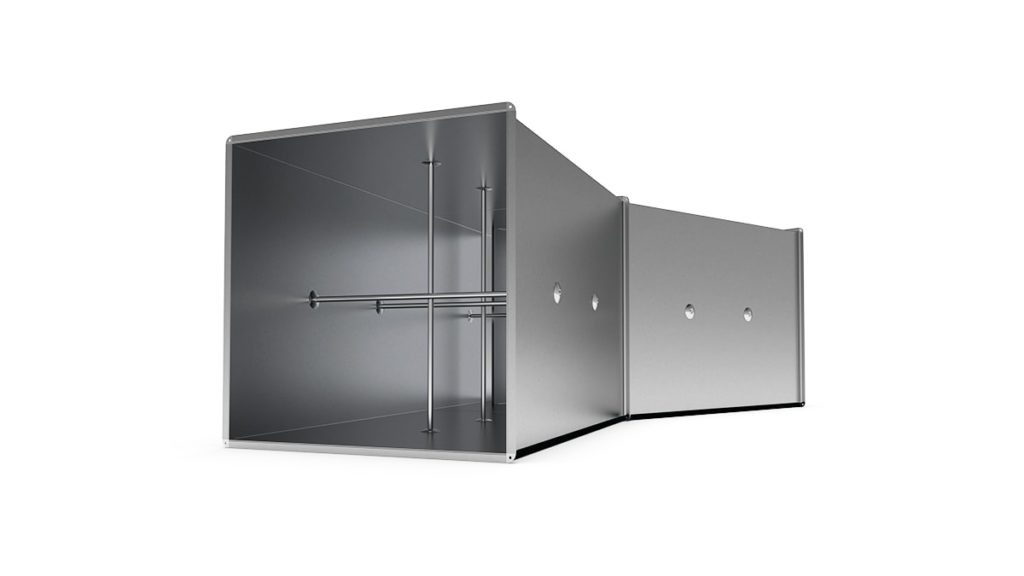How to use single-zone smoke extract ducts with multi-zone. Connecting to smoke exhaust

In multi-storey buildings floors are divided into individual fire zones. One storey usually represents one fire zone.
Regulations provide information on different types of exhaust ventilation ducts to be used in particular fire zones. They do not, however, clearly state how to connect them. A solution to this issue is not given in appropriate standards either.
Connecting the smoke extract ducts – two simple tips
It is often neglected that we can choose between two design solutions when connecting single-compartment and multi-compartment systems. The Promatect board placement is considered when deciding on a particular option. It should be noted that screws of different length and diameter may be used, depending on the board thickness. Furthermore, we need to ensure that appropriate board flashings are used by the fitter at the site. We can choose between the following options:
-
End-to-end connection. Butt joint. A way to connect smoke exhaust ducts
- The frame of the SDS duct compensation component is fixed to a Promatect board in an end-to-end connection using screws spaced at 200 mm and sealed using the Promat K84 adhesive.

2. Surface connection
- The frame of the SDS duct compensation component is fixed to the top layer of the external Promatect board using screws spaced at 200 mm and sealed using the Promat K84 adhesive.

Note:
Pay special attention to guides located on the perimeter of the housing when using the SDS-KE textile compensators. They cannot come in contact with flashings.
Single compartment smoke exhaust ducts SDS
SDS smoke exhaust ductwork elements may be coated, e.g. by the Manufacturer, with polyester powder paints in accordance with applicable processes.
SDS steel single compartment smoke exhaust ducts are classified according to the PN-EN 13501-4+A1:2010 standard as E600120(h0)S1500single fire resistance class, and as non-flammable, and fire retardant. SDS-KE and SDS-KEP compensators are classified as B-s1,d0 fire reaction class according to the PN-EN 13501-1+A1:2010 standard. Steel sheet elements coated according to applicable requirements are classified as A2-s2,d0 fire reaction class.
Stay with us on a regular basis:




